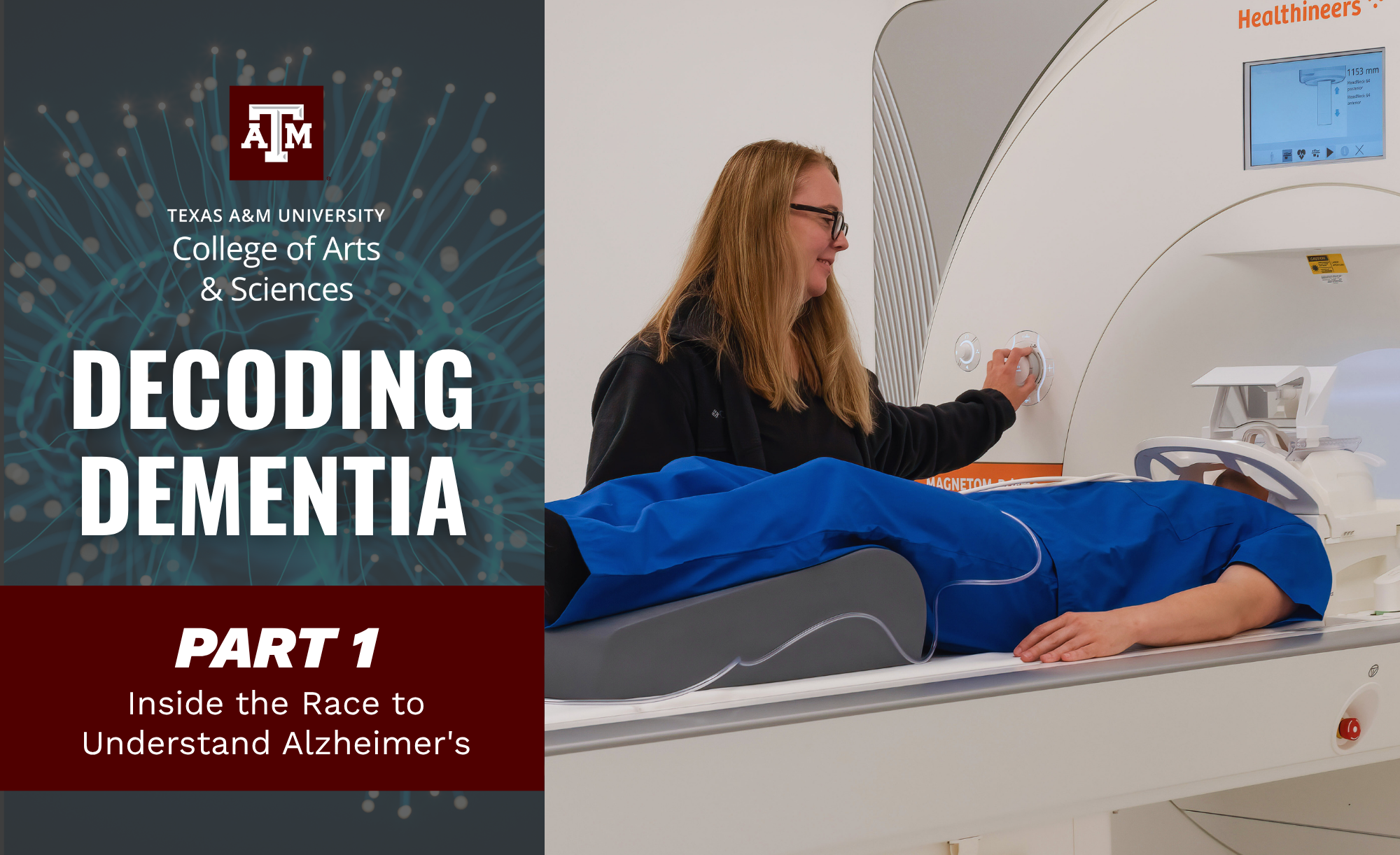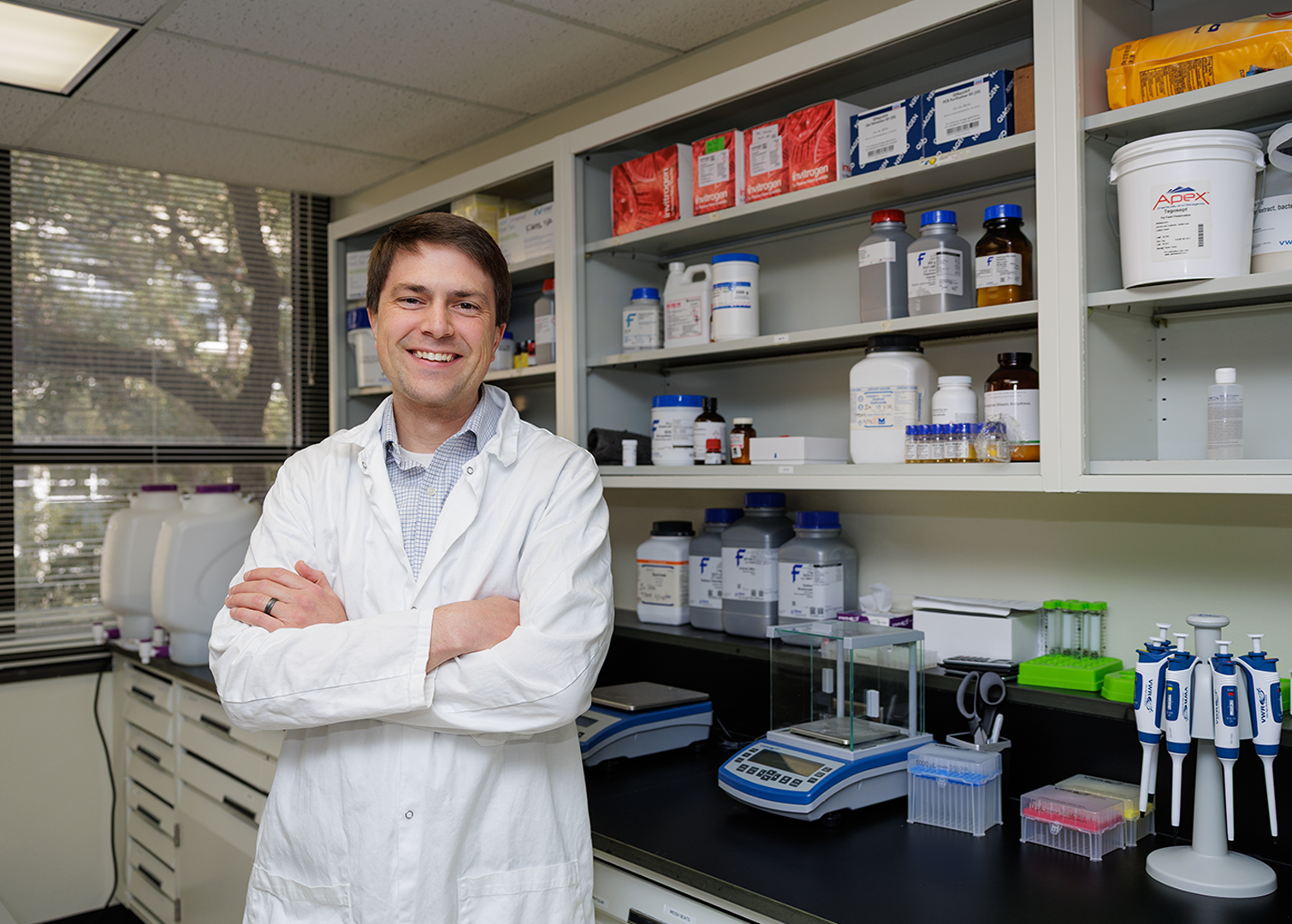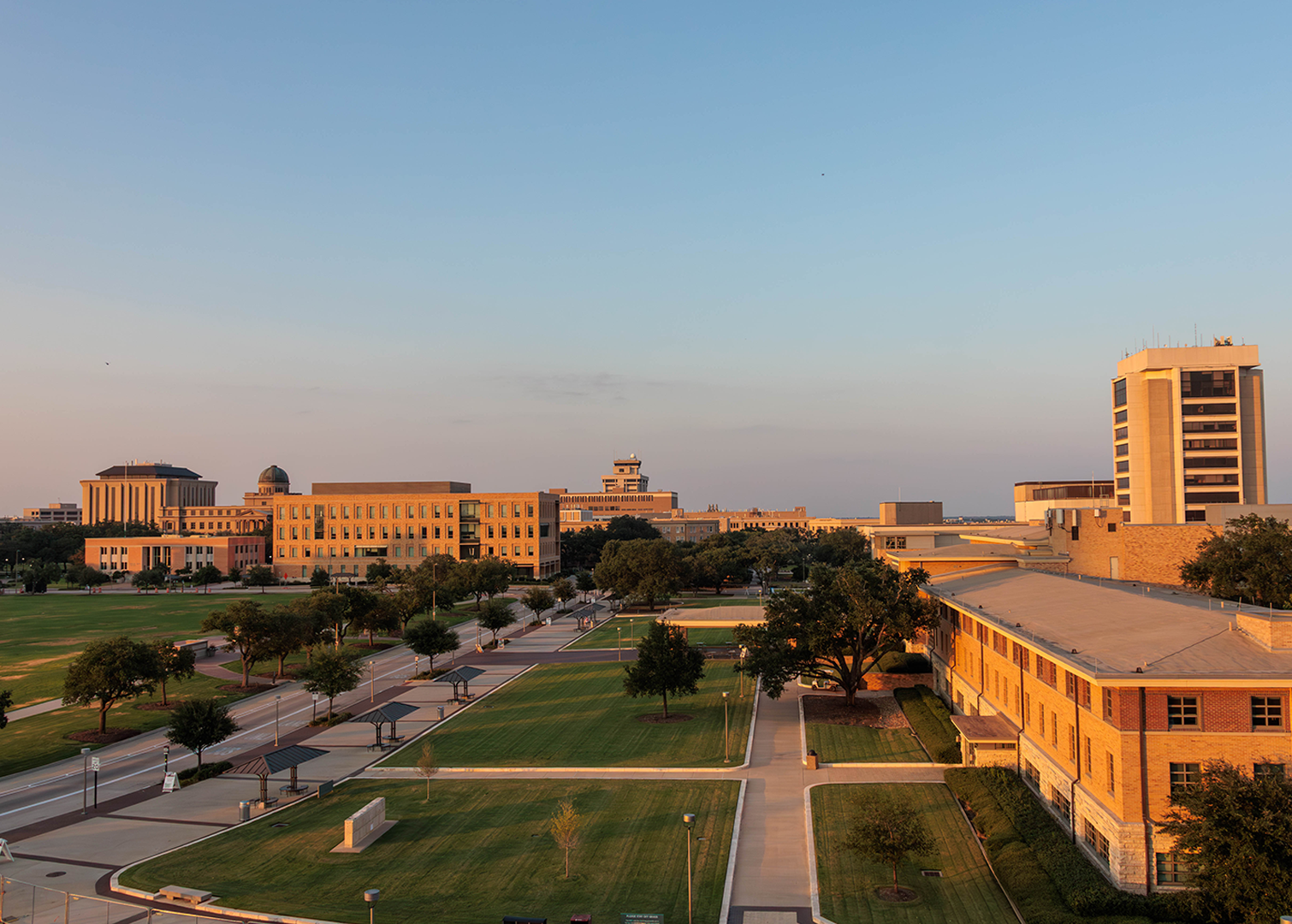
One in nine people over 65 years old in the United States suffer from Alzheimer’s disease, a figure that equates to more than 7 million people, including over 450,000 in Texas alone. Alzheimer’s is the most common form of dementia, a class of diseases that cause progressive impairment of memory and thinking and lowers quality of life. Overall, Alzheimer’s disease is among the top 10 causes of death in the United States.
Though Alzheimer’s largely affects older adults, the disease begins up to two decades before many of its associated symptoms, such as memory loss or mood changes, appear. Scientists have learned that an excess of tau protein and beta-amyloid plaques likely contribute to the development of the disease, but many researchers suspect there are many other causes and possibly many different types of Alzheimer's. Despite a great deal of research on Alzheimer's and dementia more broadly, there is still no cure.
There are lots of mysteries yet to be solved, says Dr. Matthew Moulton, an assistant professor of biology at Texas A&M University. Unfortunately, as much as we have studied the disease, we still know very little even about some of the most basic and fundamental problems underlying disease.
More than a dozen researchers including Moulton at the College of Arts and Sciences are chipping away at those mysteries to better understand the disease and how to treat it. Since 2021, Texas A&M researchers in the college earned more than $24 million in federal funding and $3 million from the WoodNext Foundation to target a variety of elements of Alzheimer’s disease and related dementias, from cellular changes occurring in the brain to the ways our environment and social circumstances like climate change or formative years in a low-income neighborhood may contribute to its development.
With any disease, but especially Alzheimer's, you're going to need to address it at many different levels, said Dr. Alex Keene, a professor and head of the Texas A&M Department of Biology. The college is unique in that there is just such a breadth of research addressing Alzheimer's from many different angles. That's why something like an initiative within the College of Arts and Science can be really effective.
In the Body

Alzheimer's and other types of dementia develop because of changes in the brain, specifically damage to neurons. As Alzheimer's advances, some neurons die off entirely. These changes in the brain act as biomarkers of the disease's progression.
The college is home to numerous scientists examining these changes on a granular level. Dr. Rajarshi Guhaniyogi, a statistics professor, develops AI models that can analyze neuroimaging data. Dr. Sharmistha Guha, an assistant professor in statistics, uses neural networks to identify anomalies in the function of brain structures. Dr. Rongxiang (Catherine) Tang, an assistant professor in psychological and brain sciences, examines how cognitive function changes as we age. She is undertaking a study focused specifically on middle-aged adults between the ages of 40 and 55.
There's actually not a lot of work on this group because most studies focus on older adults, who are those most at risk of showing signs of the disease, Tang said. She sees earlier ages as a critical period not only to understand the development of Alzheimer's, but also to develop ways to intervene before the disease sets in. If we can identify people who may be at higher risk decades before the symptoms onset, there's plenty of time for us to either use therapeutics or other sort of intervention, like exercise, lifestyle interventions to reduce their risk.
Tang's research includes brain and cognitive assessments, tracking of daily activities like sleep patterns with an Oura ring and blood tests to identify potential early signs of biomarkers associated with Alzheimer's disease.
Across the college, she says, researchers are looking at different stages of what we call the Alzheimer's disease continuum, to understand what is happening in the brain from the disease's preclinical diagnosis to its advanced stages.
In Animals

Texas A&M researchers are also looking for answers beyond the human body. For complex diseases like Alzheimer's that can take decades to manifest in people, animals can act as an analogue for how the disease may play out.
To research the correlation between sleep loss and Alzheimer's, for example, Keene's lab works with Mexican cavefish, a species that requires very little sleep but appears resilient to any deleterious effects. Keene explained the mechanism that protects cavefish from sleep-loss associated degradation may be protective against Alzheimer's in humans.
Moulton's lab uses animal models, specifically fruit flies, to examine genetic mutations and how those may foster the development of Alzheimer's. The team can snip human genes, particularly ApoE the highest known genetic risk factor for late onset Alzheimer's and insert them in the place of fly genes, where they act as analogs that the team can examine for disease progression.
Moulton's lab also collaborates with Keene's lab on assessing the potential of therapeutic drugs to treat Alzheimer's. They are testing drugs already approved by the Food &Drug Administration which means they could immediately be applied in human clinical trials for Alzheimer's in genetically-modified fruit flies, which could indicate whether certain compounds may help humans.
Our work is really at the forefront of functional genetics and therapeutic discovery, says Moulton. Many of us are looking at Alzheimer's in slightly different ways, but hopefully, ultimately those will all converge on finding mechanisms of disease that we can use as a handle to make effective therapeutics.
Across Academic Plaza, Assistant Professor of Biology Dr. Isabella Farhy's lab is examining the role of GSK3b, a protein that regulates inflammation and energy metabolism, among other areas. The protein is important for the formation of synapses in the brain, but in people with Alzheimer's disease, elevated activity of that protein may contribute to damage in brain tissue. By working with this protein in mice, Farhy's lab is looking to identify novel therapeutic targets that can avoid neurodegeneration without disrupting the development of synapses.
All such studies play a role in inching researchers closer to answers, according to Alexis Breeland, a Ph.D. student working in the Moulton lab.
In this field, each experiment honestly feels like a small step towards uncovering something that could ultimately change how we understand and one day treat neurodegenerative diseases, she said. I'm motivated by the idea that what I'm doing in this one lab is contributing to what other people are doing here at Texas A&M in their labs, and in turn, is one day going to contribute to real solutions for patients and families affected by Alzheimer's.
In Society

Certain environmental factors, such as a lack of green space nearby, can put people at a higher risk of developing Alzheimer’s, as can social factors like discrimination or lower educational achievement. In the College of Arts and Sciences, research is also being conducted outside of human and animal bodies, too, to determine the role that societal factors play in Alzheimer’s disease.
Dr. Yue Zhang, an assistant professor in the Department of Atmospheric Sciences, is examining how indoor and outdoor air pollution influences dementia. That work builds on research outside of the college at the School of Public Health focusing on that relationship.
Taken together, the college has built a framework for studying Alzheimer’s with high “translation potential,” said Breeland, emphasizing not only scientific discovery but also how it can be applied to a devastating human disease.
The faculty and students alike here at Texas A&M are a growing hub for innovative Alzheimer’s disease research,” she said. “I’m really excited to be able to be a part of this.
Dr. Jessica Bernard, a professor in the Department of Psychological and Brain Sciences researching brain aging and ways to improve quality of life for people at risk of dementia, said she is especially excited about the continued work in this field due to the recent passing of Proposition 14, establishing the Dementia Prevention and Research Institute of Texas (DPRIT). DPRIT will allocate $3 billion for dementia research funding for the state over the next 10 years.
This level of state support for dementia research is unprecedented,” she said. “This is a very exciting time for researchers in this field, as this commitment will allow Texas to be a national and world leader in Alzheimer’s and dementia research.
She added, we are well-poised to build off the amazing work we have ongoing, and to develop exciting new path-breaking collaborations in Arts and Sciences and across colleges here at Texas A&M University. This potential for collaboration will only make our work stronger and more impactful.
